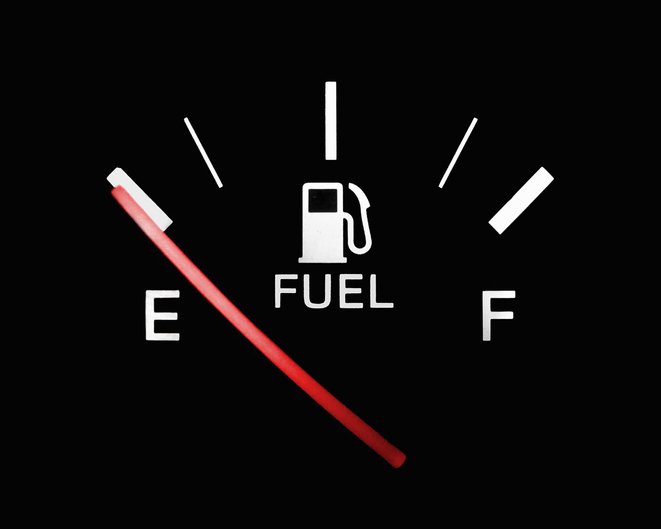Petrol-engine decline allows electrified vehicles to close the fuel-type gap in Europe
22 July 2022

Europe is seeing a radical change in passenger-car fuel-type distribution, as the internal-combustion engine (ICE) share continues to decrease. Autovista24 editor Phil Curry discusses the changing state of the market.
Until recently, the decline of the internal-combustion engine in Europe was solely down to weaknesses in the diesel market. This is no longer the case, as petrol-fuelled vehicles suffered a significant decrease in registrations during the first quarter of 2022.
The latest figures from the European Automobile Manufacturers’ Association (ACEA) show that petrol-powered new-vehicle registrations fell 23% in the EU, the UK, and the European Free Trade Association (EFTA) markets of Iceland, Norway, and Switzerland during the second quarter of 2022. Diesel saw an even steeper fall, with a 29.3% decline year on year. Petrol sales totalled 1,105,996 units, with diesel coming in at 440,823, for a combined total of 1,546,819 registrations in the quarter.
Petrol accounted for just 38.9% of new-car registrations between April and June, with diesel’s share falling to 15.5%. This means that ICE-powered vehicles held a market share of 54.4% in the quarter, compared to 60.5% in 2021.
The figures are worse for the first half of 2022. A combined market share of 53.8% between January and June means the technology is perilously close to losing its control of the automotive market to electrified vehicles, made up of hybrids (HEVs), plug-in hybrids (PHEVs), and battery-electric vehicles (BEVs).
The fall of fuel
In 2019, the ICE market held an 88.8% share of passenger-car registrations in Europe. Diesel had been in decline for some time, and rather than switch to cleaner electric technologies, drivers instead moved to petrol-engine vehicles instead.
Between 2019 and the first half of 2022 however, petrol has suffered a bigger decline. While diesel has lost 14.9% of its market share, this was not a surprise, due to the Dieselgate scandal. Yet petrol declined by 20.1%.
This marks a clear switch in buyer attitudes over the last three years. While petrol was seen as the most viable alternative to diesel, this is no longer the case. Instead, electrified vehicles have grown their market share steadily, from just 9.6% in 2019, to 43.7% in the first half of 2022.
Diesel is only the third most popular fuel type in Europe, with the gap between the technology and HEVs widening to 8.1%. It is also close to falling behind BEVs, with just 3.9% between the two. Petrol is only 14.7% ahead of the HEV market, meaning there could be a change at the top in the coming years.
Electrified powertrains continue their charge
HEVs remain the most popular choice of electrified powertrains in Europe. Despite sales falling 4.2% in the quarter, the poor performance of purely ICE-powered vehicles saw the technology increase its market share to 23.5%. For the first half of the year, HEV market share sat at 23.6%, an increase of 3.6% over the same period in 2021.
Hybrid technology represents much of what ICE offers, but with electric power supplementing some drive systems, it can produce lower carbon emissions. It is seen as a stepping stone to plug-in vehicles, but is not as effective at lowering greenhouse gas emissions as PHEVs and BEVs. Yet its rise in market share shows that drivers are looking to embrace new technologies.
Of the plug-in technologies, the market share of PHEVs remained stable at 8.4% in the quarter, even though sales fell 16.5% to just 238,122 cars. Once again, the poor performance of ICE has helped to strengthen this market in the quarter.
In the first half of 2022, PHEVs registrations fell 12% compared to 2021. The question must now be asked whether drivers are finding it easier to switch to BEVs, which provide carbon-emission-free motoring, or to buy a hybrid, which will give better short-term security.
BEV registrations continued their rise in popularity, growing 11.3% in Q2, and 31.6% in the first half of the year. Their market share for H1 2022 sits at 11.6%, up from 7.6% in the same period of last year.
The growth in the BEV market has been the most dramatic. This is likely due to the increase in incentives for the technology in certain markets, although some countries are now looking to end their programmes. There is also more choice amongst carmakers, with electrification strategies now starting to come to fruition. In 2019, BEVs held a 2.3% market share, and while their growth is still based on smaller registration numbers, there is no question that their popularity is rising.
Registrations of natural-gas vehicles plunged in Q2, with registrations down 62.9%, while liquid-petroleum gas models saw an increase in registrations of 7.9%.
Europe’s new-car market is clearly shifting to electrification. However, the strong presence of HEVs in the fuel-type statistics is the next hurdle for the market to overcome if it wants to realise zero-carbon targets. The Fit-for-55 package includes stricter emissions targets for 2025 and 2030, which hybrid models will help towards.
However, the 100% carbon-emissions reduction for 2035 will see an end to the sale of new hybrid models, as well as new PHEVs. Judging by the latest figures, Europe will already be well on the road to full zero-emission motoring.



